Digital Collections
Celebrating the breadth and depth of Hawaiian knowledge. Amplifying Pacific voices of resiliency and hope. Recording the wisdom of past and present to help shape our future.
Kīhei de Silva
This year’s Haku Mele winner is Kaumakaʻiwa Lopaka Kanakaole for his composition "Mele Haʻi Kupuna." The following article is a review of all Haku Mele nominees.
The complete list of nominees for the 23 categories of the Nā Hōkū Hanohano 2004 awards (for recordings released in 2003) was published in the Honolulu Advertiser on April 20. Among the most significant of these awards, from an ‘ōiwi perspective, is that of Haku Mele, an award presented to the composer of the year’s best new Hawaiian language song or chant.
First given in 1980 to Dennis Kamakahi for “He Hihiwai” by way of a voting process open to all members of the Hawaiian Academy of Recording Artists, the Hōkū Haku Mele award has since evolved into a committee award. The winner and four finalists are selected by a panel of Hawaiian language savants: teachers, scholars, musicians, and—frequently—past Haku Mele winners.
In this context of expert review, the award’s significance rests not so much with the winner of the selection process as with the field of five nominees. The careful observer can assess the health of Hawaiian language composition by reviewing these nominees and their compositions, and by asking questions of the following sort: Are there new composers on the slate, or is the already small circle of skilled haku mele growing smaller still? Is there a consistently high standard of composition, or are there significant disparities in quality as we move from mele to mele? What about scope: are today’s successful haku mele exploring the many genres of Hawaiian poetic composition or are they limiting themselves to specific kinds and shapes of mele?
These questions, when directed at the current crop of Haku Mele nominees, yield a promising response. The circle of composers is small but growing and consists of a reassuring mix of veterans and newcomers from a variety of backgrounds and points of origin: mai Hawai‘i Moku o Keawe ‘āina o Lopaka Kanaka‘ole a hiki loa i Minnesota ‘āina o Puakea Nogelmeier. The quality of their poetry and music, though not quite Pukui-Lam, is consistently worthy of admiration; most comforting, perhaps, is the loyalty that each demonstrates to the haku mele tradition and the time-honored craft of selecting, arranging, and binding the pua nani like ‘ole of their lei of words. The range of style and structure encompassed by these lei, though not as expansive as we might hope, includes wahi pana, tribute, and soliloquy, and reflects nicely on the interest of at least one of our haku mele in composing in something other than the hīmeni or ku‘i formats.
The five nominees are listed below in alphabetical order. A far-from-comprehensive discussion follows each nomination; my intent here is simply to touch on some of the positive qualities of each piece: qualities worthy of study by those seeking insight into the Nā Hōkū selection process* and by those who aspire to the ranks of haku mele.
Manu Boyd, "Laua‘e o Nu‘uanu," Cool Elevation.
Manu Boyd often composes mele on the backs on paper picnic plates and in the margins of OHA meeting agendas—such is the character of his muse, one who whispers sweetly and often into his ever-receptive ears. “Laua‘e o Nu‘uanu” was composed after a laua‘e picking expedition for the baby lū‘au of Alvin and Lovely (a.k.a. Gunnie and Tweedles) Hanzawa’s third child. The mele clearly demonstrates Boyd’s effortless use of Hawaiian language and imagery (birds, flowers, heights, fragrances), his facility in the strophic, ku‘i style of the late monarchy (his linking of verses through terminal repetition is particularly seamless and unobtrusive), and his very 19th century ability to convey private emotions and relationships in an indirect, publicly appropriate manner (love for specific members of his hula family conveyed in metaphors of nature). There is, of course, more to Boyd’s talent than immediately meets the eye and pleases the ear: notice, for example, his subtle allusions to at least two much-loved and highly regarded “parent” mele for his Nu‘uanu composition: “Ke ‘Ala Ka‘u i Honi” and “Pua ‘Āhihi.” On levels both obvious and subtle, his work is both cool and elevated.
Kainani Kahaunaele, "Ka Hīnano o Puna," Na‘u ‘Oe.
A Hawaiian language article published in the Honolulu Star Bulletin by Punihei Anthony, Mailani Kalāhiki, and Kahale Saito (“Nā Haku Mele Hawai‘i,” Sunday, February 2, 2003) defines the foundation on which the craft of haku mele is built. First on their list is immersion in the poetry of old; if we do not steep ourselves in the poetic language of our ancestors, the result will be “he mau mele Hawaiʻi i unuhi hāiki wale ‘ia mai ka ‘ōlelo Haole mai”—songs that are merely slavish Hawaiian translations of English thought and language. The presence of skillfully interwoven ancestral poetry in Kainani Kahaunaele’s “Ka Hīnano o Puna” is as beautiful and overwhelming as the hīnano fragrance that pours from the hala groves of her mele. It brings tears to the eyes. It is like returning to a home that one thinks is lost. Beautifully turned phrases like “Nipo ninipo ho‘i ke aloha / Ka lehua ha‘a lewa i ke kai” are not the product of short-term dabbling in the literature of Puna and Pele. Lines like “Ke kai nehe mai i ka uluhala / E ho‘ohenoheno nei i ku‘u nui kino” are osmosed, absorbed into the being over years of listening and reading, of singing and being sung to, of first-hand, ‘ikemaka seeing, doing, and feeling. Songs like this move us closer to the day when we all compose again from an uncompromised maoli perspective. When I hear “Ka Hīnano o Puna,” I hear “Ke Ha‘a Lā Puna,” “Ninipo, Ho‘onipo,” “Ka Wahine Lewa i ka Kai,” “ʻO Hilo ‘Āina Ua Hālau Lani,” “No ke Ano Ahiahi,” and “Puna Paia ‘A‘ala.” I hear Aunty Edith, Aunty Mae, Aunty Genoa, Kawai Cockett, the Sons, and Bill Ka‘iwa. Aia nō ‘o Wahine Kapu i ka hale; you-know-who is definitely in the house.
Kaumaka‘iwa Lopaka Kanaka‘ole, "Mele Ha‘i Kupuna," Ha‘i Kupuna.
More wonderful “spookiness” here; more overwhelming affirmation of the presence of the very old in our very young. Wahi a ua Lopaka nei: “Ma ka no‘ono‘o a kākou po‘e Hawai‘i he palena ‘ole a mākolu ka u‘i o nā kupuna a me ka ‘ike a lākou i ku‘una mai iā mākou kō lākou mau mo‘opuna, a he kapu nō ho‘i ka lauoho iā kākou ‘oiai he waihona ia o ka mana.” (According to the aforementioned Lopaka, “In the mind’s eye of we the Hawaiian people, the radiance of our ancestors is boundless and eternal as well as the knowledge that they have passed down to us their lineal descendants, and their hair is also sacred to us as a conduit of mana.”) Lopaka Kanaka‘ole’s mele, then, is composed in honor of the hair of two of his kūpuna wahine: Tūtū Kekuewa (Mary Keli‘ikekuewa Ahi‘ena Kenao) and Tūtū Kekuhikuhi (Edith Kekuhikuhi Kenao Kanaka‘ole). The hair of the first woman, his great-great-grandmother, is “immaculate . . . fine like a veil of sleeping mist . . . an adornment of mist, of new growth, and palai fern.” The hair of the second woman—daughter of the first—is “endearing, (like) a soothing voice of the mountain ridges . . . one with the fragrance of lehua.” Poetry of this sort is supposed to have died a century or more ago with the passing of beloved ali‘i wāhine like ‘Ema Kaleleonālani whose hair is celebrated in the almost-forgotten series of mele lauoho published in He Lei no ‘Emalani (Puakea Nogelmeier, ed., 53–64). Kanakaʻole revives the form, holds fast to its old, non-strophic, “ʻālaʻapapa” structure, and delivers it in a haunting, sing-chant style reminiscent of his great-grandmother’s “He Punahele na ke Kupuna” (Edith Kanaka‘ole, Hi‘ipoi i ka ‘Āina Aloha, Hula Records), a mele inoa composed by grandmother for grandson that employs a tune belonging to her great-grand-uncle. When we play the two mele in succession, back and forth, call and answer, we are privy to a conversation that spans seven generations and loses nothing in the transmission. ‘A‘ole o kana mai ka tour de force!
Puakea Nogelmeier, "Kaiona," Ke‘alaokamaile.
Although it requires a stretch of imagination (and an outside-the-box sense of humor), I often view Puakea Nogelmeier as the William Charles Lunalilo of our day. Both are highly literate men, both are well-versed in the poetic conventions of the Hawaiian and western worlds, both are owners of extraordinary Hawaiian and English vocabularies, and both are skilled manipulators and unifiers of the two literatures. Lunalilo, when in his cups, was given to reciting the poetry of Shakespeare from the street corners of Honolulu. On less intoxicated occasions, he imported elements of the Shakespearean soliloquy—and perhaps the dramatic monologues of Byron, Tennyson, and Browning—into mele of his own creation.** Lunalilo’s “‘Alekoki,” for example, is written from the point of view of a man torn by disappointment, gossip, and scandal; the mele’s private, confessional tone, its feigned indifference, and its outbursts of passion and bitterness—all conveyed in impeccably poetic Hawaiian—represent an unprecedented fusion of traditional Hawaiian imagery and western soul-searching. Nogelmeier’s “Kaiona,” although considerably less volatile than “‘Alekoki,” adopts a surprisingly similar introspective tone and accomplishes the same synthesis of old and new. Both poets are love-battered, both attempt to rise above their personal storms: Lunalilo uses place-names and weather conditions to express his inner struggle; Nogelmeier frames his own difficulties in the form of a kānaenae ho‘opakele (a prayer for rescue) and employs a sequence of “h-words” (the hihipea, hihimanu, pāhi‘ahi‘a, and hihia of entanglement; the huli aku, huli mai, hulina of the fickle hearted; the lohia of the patient and forgiving) to illustrate the process by which he has journeyed from misguided attraction, to despair, to a glimmer of hope. “Kaiona,” i ka‘u ‘ike, is very much a mele-soliloquy, and it is as masterfully expressed as its groundbreaking, 1860s predecessor.
Cody Pueo Pata, "He Aloha No Ku‘u ‘Āina," Holoholo Mai – Maui, various artists.
As with the Kahaunaele and Kanaka‘ole nominations, Pueo Pata’s “He Aloha no Ku‘u ‘Āina” demonstrates a sure-footedness, a grounding in tradition, that is remarkable in one so young and relatively new to the vocation of haku mele. Pata defines his composition as a mele pana (place song) and mele aloha ‘āina (song of affection for the land) “that extols the two mountain masses and twelve traditional districts of the island of Maui.” He then takes us on a clockwise, makahiki-style circuit of the island that begins with “Ka malu ‘ulu a‘o Lele” and concludes with “Moa‘e pāluku o Honua‘ula / A ‘o Kula i ka Nāulu.” Pata’s strength, here, lies in his fidelity to the Maui song-writing tradition that begins with the Reverend Samuel Kapu’s “‘O Maui nō ka ‘Oi,” and includes such rousing, aloha ‘āina classics as “Ku‘u Home ‘o Maui,” “Ho‘oheno a‘o Pi‘ilani,” “Moe Kokolo,” “Lani Ha‘aha‘a,” “Huelo,” “Ha‘aheo ‘Oe Maui,” and “‘Iniki Mālie.” These are proud songs, boasting songs, irresistible songs—songs built on an unshakeable faith in the power of simple language and time-honored epithets to stir the memory, awaken the senses, incite the emotions, and bring even non-Maui folks into the fold of “‘Auē, auē, ku‘u home ‘o Maui nō ka ‘oi.” Like his haku mele predecessors, Pata eschews the temptations of over-writing, of over-creating. Instead, he builds his mele on well-known epithets (“nā hono a‘o Pi‘ilani”), nearly forgotten epithets (“ua pe‘e pūhala a Hāmākualoa”), and new epithets fashioned from old sources (“ke Kā‘ili Aloha a‘o Kīpahulu”). Like these predecessors, he adopts a humble, almost anonymous stance in his mele; his presence in “He Aloha no Ku‘u ‘Āina” is minimal; he keeps to the background and gives the old words full voice. This is the old way, the composer is insignificant and the honoree occupies the limelight. Na Pata (composed by Pata) means little; no Maui (composed in honor of Maui) means everything. The result is both rare and admirable: an immediately familiar, brand new mele; one about which the kūpuna—upon hearing for the first time—will inevitably say: “Oh my; I haven’t heard this song in ages.”
The 27th annual Nā Hoku Hanohano Awards show will take place on May 24th at the Hilton Hawaiian Village; most of the proceedings will be televised live starting at 7:30 p.m. on KFVE TV. We are accustomed to applying the cliché: “They are all winners” to competitions of this sort; in the case of the five Haku Mele nominees, there is much truth to the old saw. The five are cause for continued hope in the slow revival of an underappreciated art. All, however, is not well in the world of Hawaiian music. One, less-than-uplifting indicator of the ongoing, second-class status of the haku mele is the fact that none of our nominated songs makes a second appearance in the Song of the Year category. What we value in the composition of mele Hawai‘i has not been rewarded by the ear, or votes, of the local music industry. Auē kākou.
* I should admit to serving on this year’s Haku Mele panel. Although my own top five selections are not entirely aligned with the final tally, I think this disparity indicates the depth of the current “bench.” Among the excellent mele that do not appear on the 2004 list are those composed by past winners Julian Ako, Kawaikapu Hewett, Dennis Kamakahi, and Keali‘i Reichel—and by newcomers Nani Hau‘upu and Bobby Moderow. Also worthy of recognition are the multiple compositions of Randie Fong that appear on I Mua e Nā Pōki‘i; Fong withdrew these mele from consideration because of his belief that the album constitutes a group effort whose spirit is inconsistent with the singling out of individual talent.
** I am indebted to John Charlot for first advancing this argument in the HPU-KNDI Radio series “Hawaiian Poetry,” June 13, 1979.
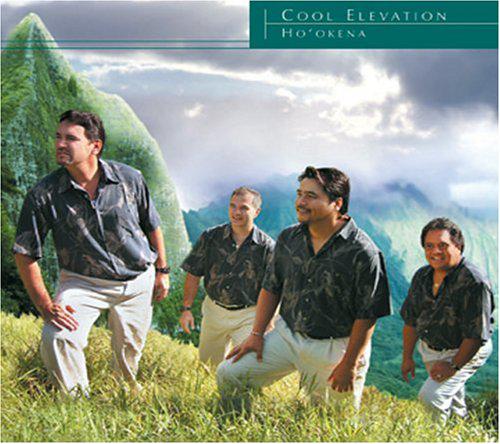
Manu Boyd, "Laua‘e o Nu‘uanu," Cool Elevation
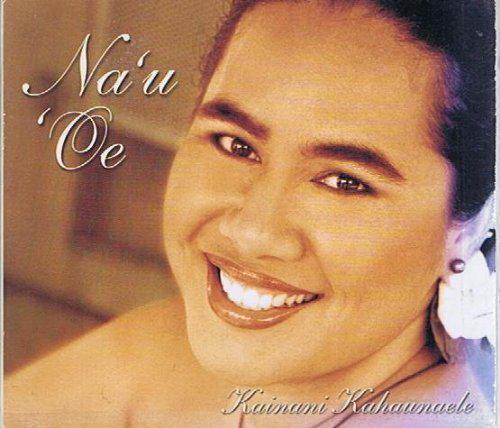
Kainani Kahaunaele, "Ka Hīnano o Puna," Na‘u ‘Oe
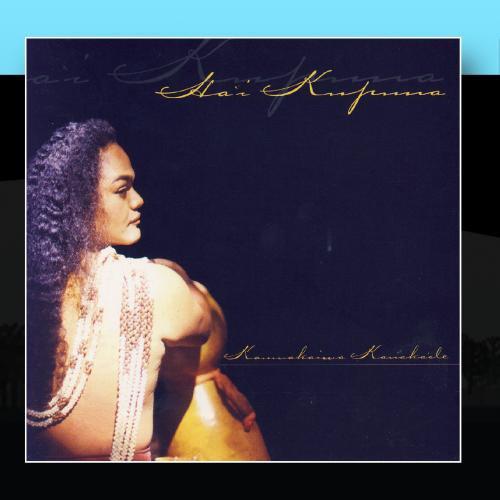
Kaumaka‘iwa Lopaka Kanaka‘ole, "Mele Ha‘i Kupuna," Ha‘i Kupuna
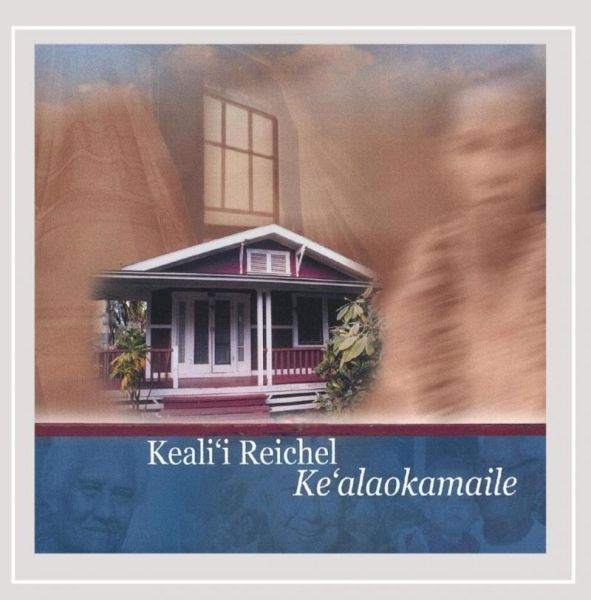
Puakea Nogelmeier, "Kaiona," Ke‘alaokamaile
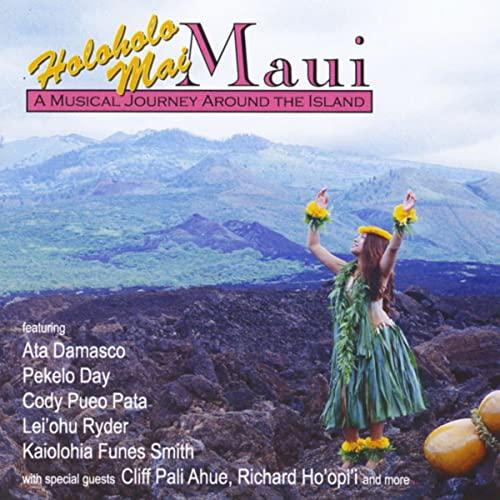
Cody Pueo Pata, "He Aloha No Ku‘u ‘Āina," Holoholo Mai – Maui, various artists